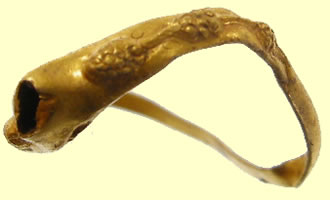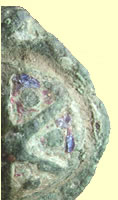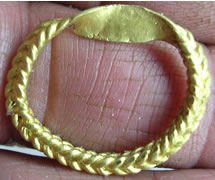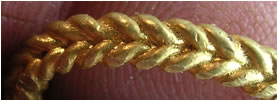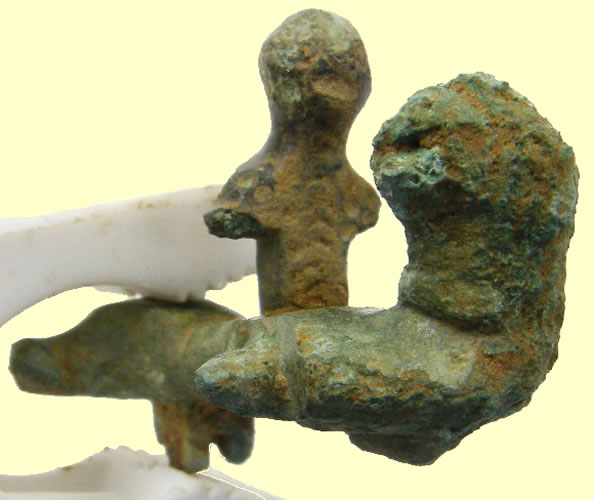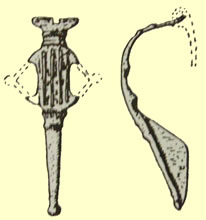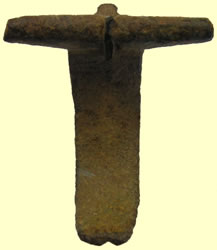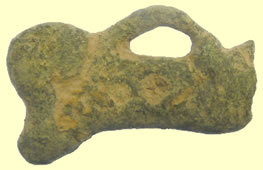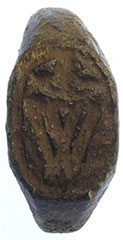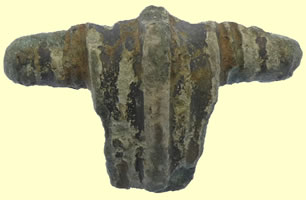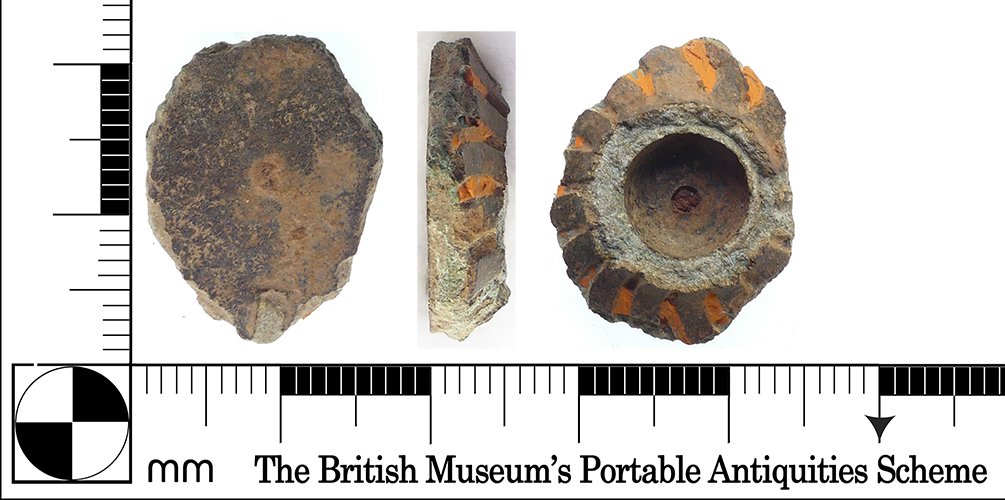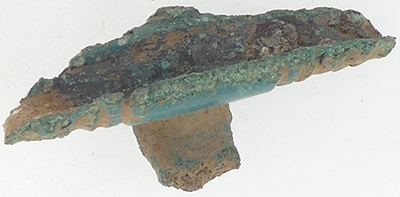

Metal detecting holidays in England with the World's most successful metal detecting club.20 years plus.
Twinned with Midwest Historical Research Society USA.
Roman jewelry - Rings, brooches, pendants etc |
Roman BC silver coins click here |
 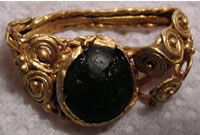   |
4thC Roman gold ring with green stone found by Mass Bill on display at Colchester museum
|
|
Roman gold ring -decorated with hanging fruit and vine - reported as treasure to museum 1.46g, 24.49mm |
|
1st to 4thC Roman decorated gold ring with green stone - reported to Colchster museum as treasure 20.01mm,1.43g |
Roman or Saxon solid gold hanging pendant ? - 2.65g, 11.95mm H x 10.68mm dia x 11.68mm W - still awaiting British Museums curators report |
   |
Stunning 2nd C Roman enameled Trumpet headed fibular brooch - Hattatt Page 329 Fig 188, 449 |


Stunning 2ndC Roman enamelled plate brooch
2nd C Roman plate brooch - 27.39mm H x 21.16mm W |
 |
|||||||||
Roman (2nd century AD) cast copper alloy plate brooch. The brooch consists of a small flat rectangular plate (21.1mm by 14.17mm) with two rounded knops projecting from each long edge. The pin and hinge are missing. The front of the plate is decorated with four lozenges, each punched with a hole in the centre. Eight triangular cells created by the four lozenges do not contain any enamel. The reverse is plain. There is no catchplate but the reverse side of one of the knops has two damaged lugs for the missing hinged pin. The weight of the brooch is 4.14g. The colour of the brooch is light brown. No exact parallel could be found, however similar examples can be seen in Hattatt visual catalogue page 352 figure 211. |
||||||||||
  |
 |
 |
||||||||
Roman bronze
winged Phallus pendant 27.87 - 49.02mm L found by Cal Jeff |
Roman 2nd
c. brooch derivative 'T' shaped tapering |
1stC AD
Roman fibula brooch |
||||||||
 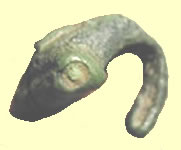 |
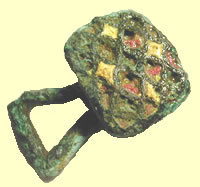  |
|||||||||
AD 50 Colchester
type T shape dolphin brooch |
Dress fastener
is 1/2nd century AD- Romano British a variant 29 Hattatt |
|||||||||
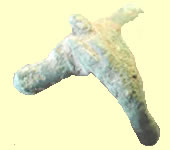 |
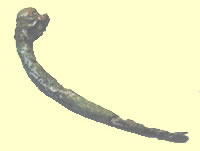 |
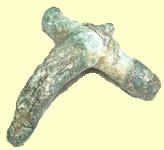 |
 |
|||||||
AD 50 Colchester
type T shape dolphin brooch |
Roman fibular brooch casting fault |
AD 50 Colchester
type T shape dolphin brooch |
Roman period
ring |
|||||||
  |
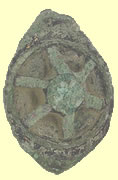  |
|||||||||
2ndC Roman
trumpet brooch |
2ndC Roman
bronze disc brooch |
|||||||||
 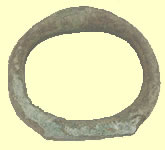 |
||||||||||
Legio XIX was a Roman legion levied (drafted into military service) in 41 or 40 BC by Augustus. They were destroyed in AD 9 in the Battle of the Teutoburg Forest. The emblem of the XIX th legion is unknown, but probably was the Capricorn as other legions levied by Augustus. The first assignment was in Sicily where Sextus Pompeius, son of Pompey, was still rebelling. This revolt put Rome's grain supply in peril and it needed a harsh response. In 30 BC, veterans of the XIX legion were settled near Pisa, and after that, the rest of the legion was allocated in the Rhine frontier with base camp at Cologne. The XIX legion participated in the German Campaigns of Drusus (13 to 9 BC) and Tiberius (8 to 5 BC). By the year 5 BC Germania was a Roman province and Publius Quintilius Varus was assigned as governor. In September AD 9, Arminius, leader of the Cherusci and a Roman ally, set a trap. He reported a major revolt of one of the western tribes and suggested the return of both governor and his legions to the Rhine. Varus accepted the suggestion and went with the XVII, XVIII and XIX legions. The army was trapped near Osnabrück and was completely destroyed in the Battle of the Teutoburg Forest. Between 16 and 18, Germanicus, the leader of the Rhine armies, looked for the remains of the legions. His army buried the bodies and recovered the legions' eagles for Rome. |
||||||||||
 |
 |
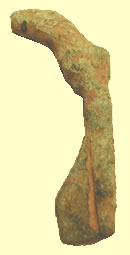 |
 |
|||||||
1st C BC/AD
Roman La Tene fibula brooch |
Roman fibular brooch casting fault |
1stC decorated
Roman brooch, bow and foot only |
1st to 4thC Roman bronze seal ring |
|||||||
  |
  |
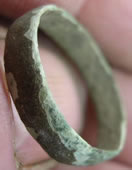 |
||||||||
1st C Roman
fibula brooch - Colchester type |
Very unusual
type 2ndC Roman head stud type bronze brooch 6.83g - 38.02mmL |
Early plain bronze ring - shows lamination like a Roman ring but it probably Medieval - one for the museum |
||||||||
  |
  |
 |
||||||||
1stC AD Colchester type
Roman fibula brooch fragment |
Very unusual Aucissa derivative 1stC AD Bronze Roman fibula brooch with extra large shoulders 34.12mmW 24.41mm L, 5.47g Part of the mechanism still in shoulder - great find |
1stC AD Colchester type
Roman fibula brooch fragment |
||||||||
|
 |
|||||||||
2ndC
Roman Plate brooch -enamel cells of red and blue - gold spokes 4.99g,
28.85mm L x 18.54mm w |
2nd
C Roman blue and yellow enameled Plate brooch - 7.56g,28.1mm L x 15.46mm
W |
|||||||||
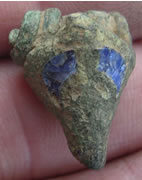  |
|
|||||||||
1st
to 2nd C Roman blue enameled Trumpet brooch 9.84g, 16.63mm W x 21.68mm
L |
1st C - Very unusual Roman brooch 18.11mm W, 24.31mm L 'The Langton Down style was developed in Gaul in the late 1st C BC but saw use in Britain from the time of the Claudian invasion until about 75 AD. The spring on these brooches is enclosed within a distinctive tubing of fairly thin construction.The bow is flat and very thin decorated with grooves and ribs (reeding)' |
|||||||||
4thC Roman gold ring 3.92g, 25.25mm outer dia 3.12mm thick |
||||||||||
|
  |
|||||||||
Roman bronze signet ring
- the face is worn but appears to be T 2.43g, 21.25 mmdia |
1stC
Roman Dolphine type fibula brooch
|
|||||||||
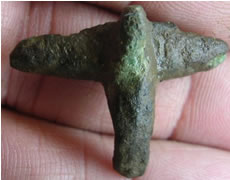  |
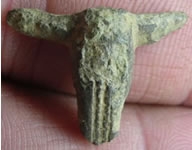  |
|||||||||
1stC
Roman Dolphine type fibula brooch |
1stC
Roman Dolphine type fibula brooch |
|||||||||
 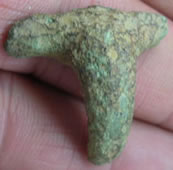 |
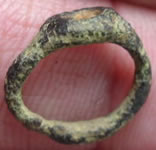  |
|||||||||
2ndC Roman bronze fibula brooch
|
Possible Roman bronze ring |
|||||||||
|
  |
|||||||||
Stunning 1st/2nd C trumpet type Roman blue and yellow enameled fibula brooch 5.32g, 26.05mm L x 10.48mm W |
Roman fibular broonch fragment |
|||||||||
ROMAN (Certain) to ROMAN (Certain), Circa 75 AD - Circa 200 AD bottom part of the same type of enameled brooch below found earlier in the season
ROMAN (Certain) to ROMAN (Certain), Circa 75 AD - Circa 200 AD
Bottom part found by another detectorist months later
ESS -E663E7
|
||||||||||
|
||||||||||
ESS-6DEAF4
|
||||||||||
|
|
||||||||||
|
Romano/British twisted wire fastener |
||||||||||
ESSEX, England: ESS-11BF24 Roman headstud brooch
|
||||||||||
  |
  |
|||||||||
2nd C Roman 'headstud type' bonze fibular brooch fragment |
2ndC Roman bronze fibula brooch
|
|||||||||
|
  |
|||||||||
Huge 2nd C Roman fibula brooch - these thin examples are believed to be casting failures by the museum
|
2ndC Roman bronze fibula brooch
|
|||||||||
  |
  |
|||||||||
2ndC Roman bronze fibula brooch |
2ndC Roman bronze fibula brooch
|
|||||||||
  |
  |
|||||||||
2ndC Roman bronze fibula brooch |
2ndC Roman fibular brooch |
|||||||||
Huge 4th to 6thC bronze brooch 47.63mm W, 30.66g Either Longbow or Cruciform type |
||||||||||
  |
  |
|||||||||
2nd C Roman fibular brooch |
2nd C Roman fibular brooch
|
|||||||||
  |
  |
|||||||||
Roman amphora brroch |
2ndC Roman fibula brooch |
|||||||||
 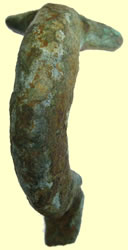  |
||||||||||
Red enamelled 3rd C Roman crossbow brooch 24.46g, 39.74mm
|
||||||||||
  |
  |
|||||||||
Romano/British enamelled disc brooch |
1stC Roman fibular brooch fragment |
|||||||||
  |
  |
|||||||||
1stC Roman fibular brooch |
1stC Roman fibular brooch |
|||||||||
|
||||||||||
3 beauty Roman fibular brooches 1stC Colchester type two piece - 1stC Rosette brooch |
||||||||||
|
|
|||||||||
Rare find - 1stC BC to 1stC AD Celtic cosmetic decorated wode grinder |
1st C Roman fibular brooch 13.14g, 50.51mm |
|||||||||
Romano/British Ancient gold ring - reported as treasure to the museum 1.53g, 26.17g |
||||||||||
Roman bracelet |
||||||||||
Roman bracelet |
||||||||||
   |
||||||||||
Stunning 1st C decorated fibular brooch
|
||||||||||
  |
  |
|||||||||
1stC Roman fibular brooch |
1stC Roman fibular brooch - casting flaw |
|||||||||
 |
  |
|||||||||
1stC Roman fibular brooch - casting flaw |
2ndC Roman fibular brooch |
|||||||||
  |
|
|||||||||
Stunning 2nd Roman enameled head stud stype brooch |
Very unusual 2nd C Roman fibular brooch - not a design I know |
|||||||||
  |
|
|||||||||
2ndC Roman fibular brooch |
2ndC Roman fibular brooch |
|||||||||
   |
  |
|||||||||
Fantastic complete 2ndC Roman plate brooch |
2ndC Roman fibular brooch |
|||||||||
  |
  |
|||||||||
Huge thin 2nd Roman fibular brooch |
2ndC Roman fibular brooch |
|||||||||
2nd C Roman gilded snake headed braclet |
||||||||||
  |
 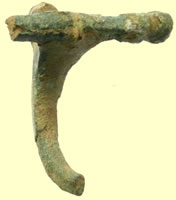  |
|||||||||
Roman fibular brooch |
3rd/4thC Roman crossbow brooch |
|||||||||
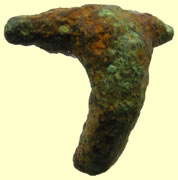  |
  |
|||||||||
2ndC Roman fibular brooch |
Roman brooch with possible missing intaglio centre |
|||||||||
  |
|
|||||||||
Tiny 2nd C Roman fibular brooch |
2nd C Roman fibular brooch | |||||||||
   |
  |
|||||||||
| Not certain if this a Saxon or Roman decorated brooch - got to check ref books | Stunning gilded 2ndC Roman fibular brooch | |||||||||
|
||||||||||
What a magnificent find - Roman brooch - shaped with a rider on animal with enamel inlay. Must be some kind of votive offering Man is decorated with circle and crescents 31.17mm L x 22.66 mm H ,10.99g |
||||||||||
  |
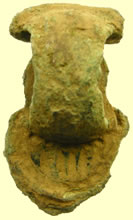  |
|||||||||
| 2nd C Roman fibular brooch | 1stC Roman Rosette brooch | |||||||||
  |
  |
|||||||||
| 2ndC Roman fibular brooch | 2ndC Roman fibular brooch | |||||||||
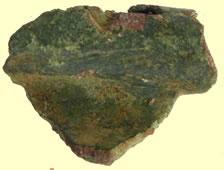  |
  |
|||||||||
| 2ndC Roman fibular brooch | 2ndC Roman head stud type fibular brooch | |||||||||
  |
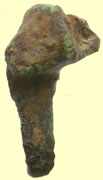  |
|||||||||
| 2nd C Roman fibular brooch - headstud type | 2ndC Roman fibular brooch | |||||||||
  |
  |
|||||||||
| 2ndC enamelled fibular brooch | 2ndC Roman head stud type fibular brooch | |||||||||
   |
   |
|||||||||
| 1st C Colchester type Roman fibular brooch | 1st C Aucissa type Roman fibular brooch | |||||||||
  |
 |
|||||||||
| 2ndC Roman fibular brooch - type not Id'd - possibly Saxon | 2nd C - 1st C La Tene type Roman fibular brooch | |||||||||
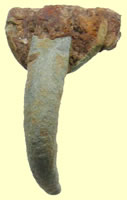   |
  |
|||||||||
| 1st C Dolpin type Roman fibular brooch | Roman 2nd C enamel inlay head stud type fibular brooch | |||||||||
Roman fibular brooch - Hod hill type - 1st C AD - openwork type |
||||||||||
  |
  |
|||||||||
| 2ndC Roman fibular brooch | 2ndC Roman fibular brooch | |||||||||
circa 1st to 6th C - Most unusual fibular brooch I have seen dug - no classification in Hattatt's ref books. Front panels would have been enamelled. One for the museum experts |
||||||||||
  |
  |
|||||||||
| 1stC Roman Rosette brooch | 2ndC Roman fibular brooch | |||||||||
  |
  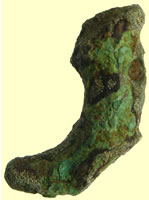 |
|||||||||
| 2ndC Roman fibular brooch | 2nd C Roman trumpet brooch | |||||||||
   |
  |
|||||||||
| 1stC BC Roman European fibular brooch , Knotenfibeln | Huge 2nd C Roman fibula brooch - these thin examples are believed to be casting failures by the museum | |||||||||
  |
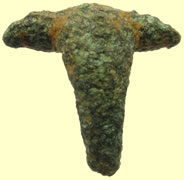 |
|||||||||
| 1stC AD Colchester type Roman fibula brooch fragment | 2ndCRoman fibular brooch | |||||||||
 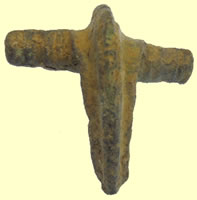 |
|
|||||||||
| 1st to 2ndC Roman Dolphin type fibular brooch | Roman bronze hanging phallic pendant | |||||||||
  |
 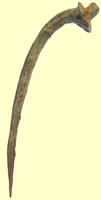 |
|||||||||
| 2ndC Roman fibular brooch | Huge 2ndC Roman fibular brooch | |||||||||
  |
  |
|||||||||
| 2ndC Roman fibular brooch | 2ndC Roman fibular brooch | |||||||||
  |
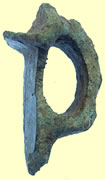  |
|||||||||
| Iron Age bronze bead | Incomplete late Iron Age to early Roman (25-60AD) cast copper alloy rosettle brooch | |||||||||
2ndC AD Roman Zoomorphic brooch - Domestic birds Red enameled diamond decoration - some enameling remains Ref 1167 Hattatt |
||||||||||
  |
  |
|||||||||
| 2ndC Roman fibular brooch | Roman gilded mount | |||||||||
  |
  |
|||||||||
| 2ndC Roman fibular brooch | 2ndC Roman fibular brooch | |||||||||
  |
|
|||||||||
| 2ndC Roman enamelled fibular brooch | Roman 2nd C bird brooch | |||||||||
  |
  |
|||||||||
| 2ndC Roman fibualr brooch | 2ndC Roman fibualr brooch | |||||||||
  |
  |
|||||||||
| 1st to 2nd Hinge - head Roman brooch | 2ndC Roman fibular brooch fragment | |||||||||
  |
  |
|||||||||
| 2ndC Roman fibular brooch | 2ndC Roman fibular brooch top | |||||||||
  |
  |
|||||||||
| Incomplete late Iron Age to early Roman (25-60AD) cast copper alloy rosettle brooch. | 2ndC Roman fibular brooch | |||||||||
  |
  |
|||||||||
| 2ndC Roman fibular brooch | Unknown Roman widget with suspension loop ? | |||||||||
  |
  |
|||||||||
| Roman pugio suspension ring | Romano/British bronze gilded pendant - suspension loop remains | |||||||||
  |
  |
|||||||||
| 2ndC Roman fibular brooch | 2ndC Roman fibular brooch | |||||||||
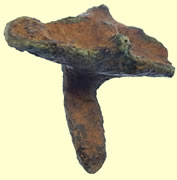  |
  |
|||||||||
| 2ndC Roman fibular brooch | Iron Age to early Roman (25-60AD) cast copper alloy rosette brooch. | |||||||||
  |
  |
|||||||||
| Huge decorated 1st to 2nd C Roman fibular brooch - Wroxeter type | 2nd/3rd C Roman gilded plate brooch | |||||||||
  |
  |
|||||||||
| 2ndC Roman fibular brooch | 2ndC Roman fibular brooch | |||||||||
3rd-4thC crossbow Roman brooch |
||||||||||
  |
 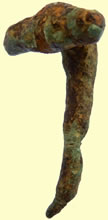 |
|||||||||
| 2ndC Roman fibular brooch | Huge 2ndC Roman fibular brooch | |||||||||
  |
  |
|||||||||
| 2ndC Roman head stud type fibular brooch | 2nd C Roman fibular brooch fragment | |||||||||
  |
  |
|||||||||
| 2ndC Roman fibular brooch | 2ndC Roman fibular brooch | |||||||||
Smallest 2nd C Roman fibular brooch I have ever seen - 1cm !! |
||||||||||
  |
  |
|||||||||
| Huge 2ndC Roman fibular brooch | 2ndC Roman fibular brooch | |||||||||
 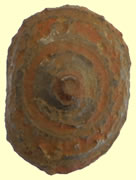 |
  |
|||||||||
| 2nd to 3rdC Roman plate brooch- gilded glass centre-boss type | 2ndC Roman fibular brooch - trumpet type | |||||||||
 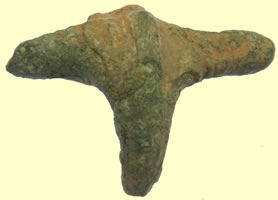 |
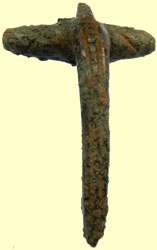  |
|||||||||
| 2ndC Roman fibular brooch - head stud type | Huge 1stC Colchester type two piece Roman brooch | |||||||||
Huge 3rd-4th C Roman crossbow brooch |
||||||||||
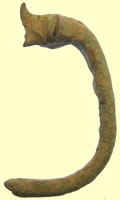  |
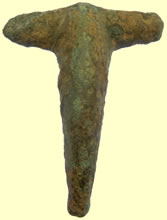  |
|||||||||
| 2ndC Roman fibular brooch | 1st C Roman fibular brooch- Dolphin type | |||||||||
Romano/British bronze clothing toggle ? |
||||||||||
Huge 1st C Roman fibular brooch- Colchester type 80mm L |
||||||||||
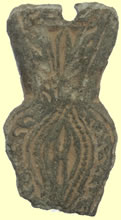  |
  |
|||||||||
| Roman bronze amphora pendant | 2nd C Roman fibular brooch | |||||||||
Uknown Bronze Age widget ? |
||||||||||
 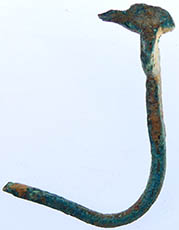 |
  |
|||||||||
| 2nd C Roman fibular brooch | 2nd C Roman fibular brooch | |||||||||
Roman bronze ring |
||||||||||
  |
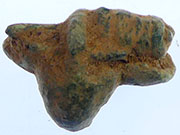  |
|||||||||
| 2nd C Roman fibular brooch | 2nd C Roman fibular brooch | |||||||||
 |
  |
|||||||||
| Roman bronze ring | 2nd C Roman fibular brooch | |||||||||
  |
  |
|||||||||
| 2nd C Roman 'head stud' fibular brooch | Huge 2nd C Roman fibular brooch | |||||||||
  |
  |
|||||||||
| 2nd C Roman 'head stud' fibular brooch | 2nd C Roman fibular brooch | |||||||||
Dolphin headed Roman open annular buckle |
||||||||||
  |
  |
|||||||||
| 2nd C Roman fibular brooch | 2nd C Roman fibular brooch | |||||||||
Roman 'fruity type'pendant |
||||||||||
  |
   |
|||||||||
| 2nd C Roman fibular brooch | 2nd C Roman fibular brooch | |||||||||
  |
  |
|||||||||
| 2nd C Roman fibular brooch | 2nd Roman fibular brooch - head stud type | |||||||||
  |
  |
|||||||||
Roman fibular brooch with diamonds ?? Just checked on line and I cannot find any bronze fib brooches with diamonds |
||||||||||
  |
  |
|||||||||
| 2ndC Roman fibular brooch - head stud type | 2ndC Roman fibular brooch | |||||||||
Roman bronze seal ring |
||||||||||
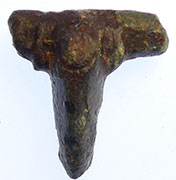  |
  |
|||||||||
| 2ndC Roman fibular brooch | 2ndC Roman enamelled disc brooch | |||||||||
   |
  |
|||||||||
| Very unusual 2nd C Roman fibular brooch | ||||||||||
 |
  |
|||||||||
| 2nd C Roman fibular brooch | 2nd C Roman fibular brooch | |||||||||
  |
  |
|||||||||
| 1stC Roman bow brooch | 2nd C Roman fibular brooch | |||||||||
  |
  |
|||||||||
| 2ndC Roman bronze fibular brooch | 2ndC Roman fibular brooch | |||||||||
 |
   |
|||||||||
| Roman pendant ? | Large 2ndC Roman fibular brooch | |||||||||
  |
  |
|||||||||
Romano British enameled brooch - white enamel remains Bust facing right ? |
||||||||||
  |
 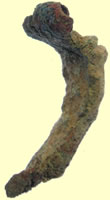 |
|||||||||
| 2ndC Roman fibular brooch | 2ndC Roman fibular brooch | |||||||||
2ndC Roman Zoomorphic enamelled brooch - bird type |
||||||||||
  |
  |
|||||||||
  |
  |
|||||||||
| 2nd C Roman disc brooch | 1stC Roman Dolphine type fibula brooch | |||||||||
Remarkable, huge relic to be found in one piece - 1stC BC to AD Romano/British decorated bronze ring - possible strap divider 76mm dia (3 inch), 8mm thick. |
||||||||||
1stC AD Colchester type Roman fibula brooch fragment |
||||||||||
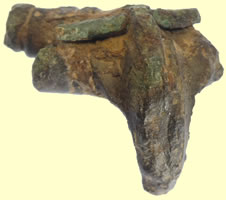  |
  |
|||||||||
| 1stC AD Colchester type Roman fibula brooch fragment | 2ndC Roman fibular brooch | |||||||||
  |
  |
|||||||||
| 2ndC Roman head stud type fibular brooch | Roman bronze open work pendant | |||||||||
  |
  |
|||||||||
| 2ndC Roman fibular brooch | 2ndC Roman bronze fibular brooch | |||||||||
  |
  |
|||||||||
| 2ndC Roman bronze fibular brooch | 1stC Colchester type two piece | |||||||||
 |
 |
|||||||||
| Roman 1st C Dolphin brooch - variant Hattatt | Unusual Roman 1st to 4thC brooch | |||||||||
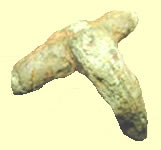 |
  |
|||||||||
| 1stC AD Roman fibula brooch | 1stC AD Roman bronze Colchester type fibular brooch fragment | |||||||||
Twisted silver wire ring - reported as potential treasure to museum |
||||||||||
Iron Age snake headed finger ring |
||||||||||
Roman gilded ring |
||||||||||
  |
  |
|||||||||
| 2nd C Roman fibular brooch | Roman gilded fibular brooch | |||||||||
Dimensions and weight Quantity: 1 BROOCHUnique ID: PUBLIC-6591C3 Roman enamelled disc brooch
|
||||||||||
  |
  |
|||||||||
| 2ndC Roman fibular brooch | 2nd C Roman fibular brooch foot - need to get my brooch books out as the foot is an unusual design | |||||||||
  |
   |
|||||||||
| 2ndC Roman head type fibular brooch | 2ndC Roman fibular brooch | |||||||||
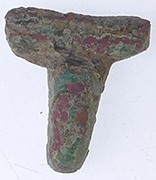  |
  |
|||||||||
| 2nd C Roman fibular brooch | 2nd C Roman fibular brooch | |||||||||
|
  |
|||||||||
| 2ndC Roman fibular brooch | 2ndC Roman fibular brooch | |||||||||
  |
  |
|||||||||
| 2ndC Roman fibular brooch | 2ndC Roman bronze fibular brooch | |||||||||
   |
||||||||||
| 2nd C Roman fibular brooch | ||||||||||
 |
||||||||||



